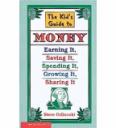Introduction and Summary:
The Kid’s Guide to Money: Earning It, Saving It, Spending it, Growing it, Sharing it, by Steve Otfinoski, provides kids with information on several different areas regarding money. This book tells kids that to get money you will have to earn it. It reviews several chores you may do in order to get an allowance. It also provides information on jobs that kids may be interested in when they grow up. This text has a chapter about spending money and focuses on the responsibilties of spending and the importance of making a budget. It goes through detailed steps of how to make a budget. Further information is provided on how to be a smart consumer. This text further talks about the rewards for young children to put their money in a bank and how adults put their money in other areas, like the stock market and bonds.
Curriculum Connections:
This text would be useful in helping children understand that in order for studens to get the things they want, they have to work to earn them. (VA SOL K.7 b). In addition, this reference contains very helpful information regarding saving money, informing students “if you want something you can’t afford right away, the best way to get it is to save for it.” This text provides four reasons why it is helpful to put your money in a bank and talks about the usefulness of a savings account (VA SOL 1.9). This book contains appendices which provide books for further reading, a glossary, and an index.
Additional Resources:
Money, Money Honey, Bunny is a lesson plan that utilizes this book and provides information on the difference between spending and saving and goods and services. This lesson also provides a matching game to review content from the story and practice of rhyming words. This lesson is for ages 6-8.
The Pickle Patch Bathtub is a lesson plan that focuses on opportunity costs and savings. This lesson is for ages 8-10.
Introducing the Classroom Economy: This website provides a lesson to set up a classroom economy, providing classroom jobs to students and assigning daily or weekly salaries to these positions. This lesson has a component involving credit and debit that could be left out for elementary students.
General Information:
Book: The Kid’s Guide to Money
Author: Steve Otfinoski
Illustrator: Kelly Kennedy
Publisher: Scholastic Inc
Publication Date: 1996
Pages: 1-128
Grade Range: k-6
ISBN: 0-590-53853-5

